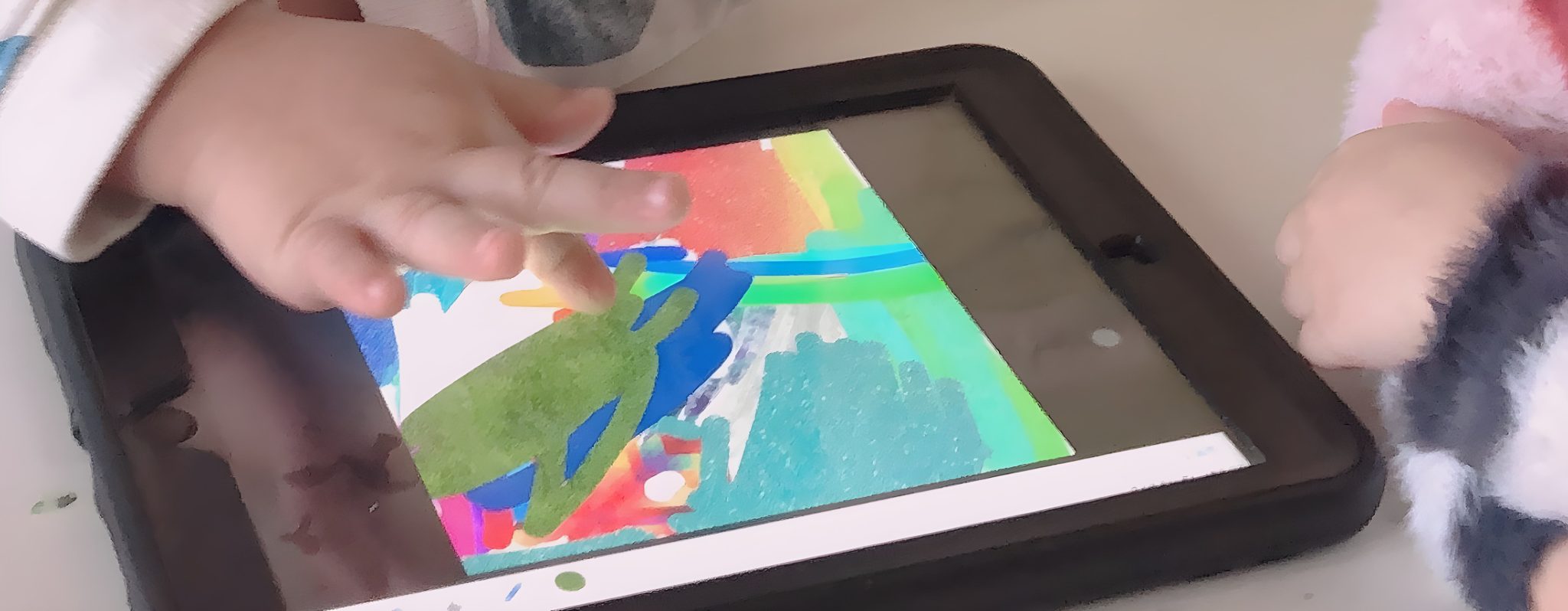What is this about?
Young children in digital contexts interact, engage, access, and learn how to use digital technologies in relationships with other people, including the adults (e.g., family members, parents, kinship members, educators) and peers (e.g., friends, siblings, extended family members) in their lives. These relationships facilitate and influence children’s engagement with digital technologies.
Read more about Relationships hereWhy is this important?
Young children today are growing up with digital technologies and using devices in their relationships with peers, family members, and other important and trusted people in their lives. When young children and their adults use digital technologies, it is important that they view, share, use, and discuss content, games, and applications in ways that strengthen their connections with each other.
Which practices support Relationships?
In our project, we identified four practices that are helpful for supporting young children to learn and develop in the area of Relationships.
| Practice | Description | Resources |
|---|---|---|
|
Viewing |
Children view digital content with others for entertainment, information seeking, relaxation, physical activity, and/or recreation. Example: Watching content on YouTube for singing, dancing, and/or rhymes with peers and adults. |
|
|
Using |
Children use digital technologies to access and share information and to communicate with others. Example: Searching for information with adult supervision and support to find out more about the type of birds observed by children in the garden. |
|
|
Showing |
Children show others how to use and engage with a variety of hardware and software. Example: Children demonstrating and explaining to each other how to take photographs using an iPad. |
|
|
Discussing |
Children, their peers, and adults discuss, consider, and reflect on digital content and/or the use and application of technologies in context. Example: Children and adults considering media classifications when selecting digital content. |
Also useful
There are other practices which may also be useful for the Relationships ECA area.
Engaging: Children and adults use devices to engage children in physical activity, including audio/video for dancing, yoga, outdoor activities, and/or use device functions such as maps or timers to enhance opportunities for movement (e.g., using a mobile phone timer to record how long it takes for the child to complete a lap of the park on their bike).
Young children’s health and wellbeing is actively supported in digital contexts
Launching: Adults capitalise on children’s media interests to launch children into physically active play to transition from screen viewing or to foster non-digital play (e.g., playing a game of ‘Keepy Uppy’ with balloons after watching an episode of Bluey in which Bluey and Bingo play the same game).
Young children’s health and wellbeing is actively supported in digital contexts
Singing: Adults specifically employ the use of singing with children to break engagement with screen-based devices (e.g., a parent using songs from ABC Kids Shake and Move to shift their child’s attention from the device to the next planned activity).
Young children’s health and wellbeing is actively supported in digital contexts
Acknowledging: Adults notice and recognise children’s interests in and experiences of using digital technologies and interacting with digital media and popular culture (e.g., an educator noticing a child’s interest in their favourite program and providing an opportunity for a short viewing of the program with peers).
Play and pedagogy promotes young children’s exploration, social interaction, collaboration, and learning in digital contexts
Interpreting: Children interpret their experiences with digital technologies and media through play and in discussion and collaboration with others (e.g., children and their educators creating and recording mini-episodes of a child’s preferred program).
Play and pedagogy promotes young children’s exploration, social interaction, collaboration, and learning in digital contexts
Supervising: Children use internet-connected technologies with filters and passwords applied and always with active adult supervision (e.g., parents implementing expectations that internet-connected devices are used by children in communal spaces, such as the family living room).
Young children’s citizenship is upheld and fostered in digital contexts
Modelling: Children and adults participate in online activities together so that adults can model safe internet behaviours (e.g., adults providing explicit commentary when using the internet with children, such as avoiding advertisements or pop-ups, resisting suggested content, asking consent for taking images, agreeing on who can view and receive images, and deciding whether images, stories, and names can be posted to social media).
Young children’s citizenship is upheld and fostered in digital contexts
Pretending: Children participate in pretend play with, and about, the internet (e.g., children and their adults pretend to use the internet to communicate and/or send and receive data using non-working devices).
Young children’s citizenship is upheld and fostered in digital contexts
